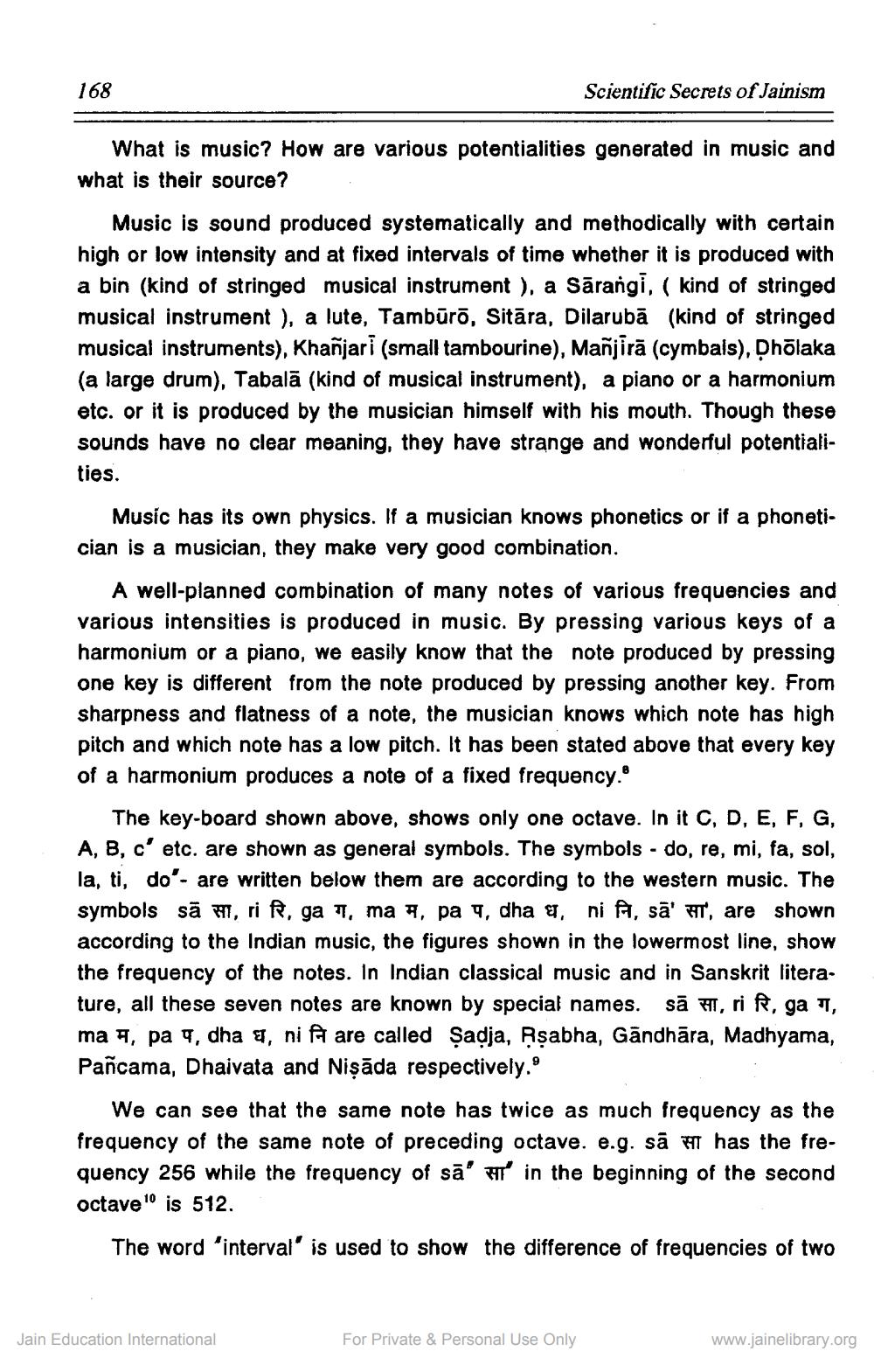________________
168
Scientific Secrets of Jainism
What is music? How are various potentialities generated in music and what is their source?
Music is sound produced systematically and methodically with certain high or low intensity and at fixed intervals of time whether it is produced with a bin (kind of stringed musical instrument ), a Sārangi, ( kind of stringed musical instrument ), a lute, Tambūrā, Sitāra, Dilarubā (kind of stringed musical instruments), Khañjari (small tambourine), Mañjirā (cymbals), Dhõlaka (a large drum), Tabalā (kind of musical instrument), a piano or a harmonium
c. or it is produced by the musician himself with his mouth. Though these sounds have no clear meaning, they have strange and wonderful potentialities.
Music has its own physics. If a musician knows phonetics or if a phoneti. cian is a musician, they make very good combination.
A well-planned combination of many notes of various frequencies and various intensities is produced in music. By pressing various keys of a harmonium or a piano, we easily know that the note produced by pressing one key is different from the note produced by pressing another key. From sharpness and flatness of a note, the musician knows which note has high pitch and which note has a low pitch. It has been stated above that every key of a harmonium produces a note of a fixed frequency.®
The key-board shown above, shows only one octave. In it C, D, E, F, G, A, B, c' etc. are shown as general symbols. The symbols - do, re, mi, fa, sol, la, ti, do'- are written below them are according to the western music. The symbols sā , ri , ga , ma 8, pa 4, dha gf, ni A, sā' FT', are shown according to the Indian music, the figures shown in the lowermost line, show the frequency of the notes. In Indian classical music and in Sanskrit literature, all these seven notes are known by special names. sā , ri Riga 1, ma , pa 4, dha , ni A are called Şadja, Rşabha, Gāndhāra, Madhyama, Pañcama, Dhaivata and Nişāda respectively."
We can see that the same note has twice as much frequency as the frequency of the same note of preceding octave. e.g. sāH has the frequency 256 while the frequency of sā' in the beginning of the second octave is 512.
The word 'interval' is used to show the difference of frequencies of two
Jain Education International
For Private & Personal Use Only
www.jainelibrary.org




